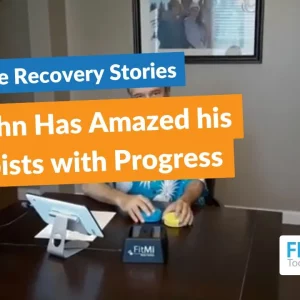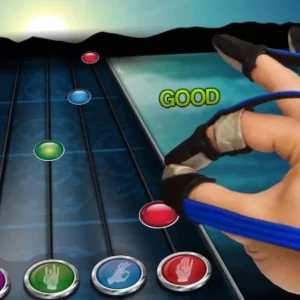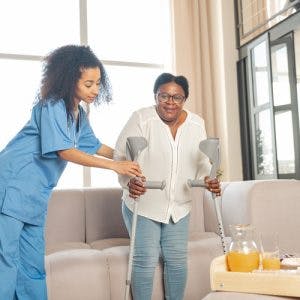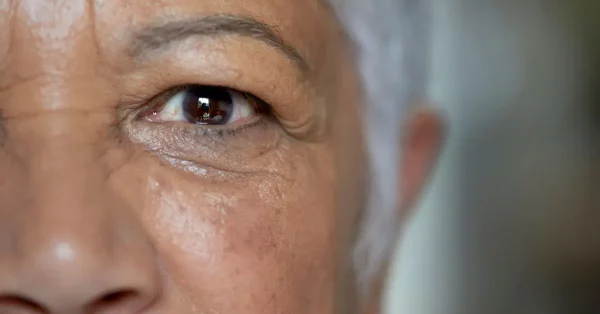Questions about recovery after stroke often elicit a common response from medical teams: “Every stroke is different, so every recovery will be different.” Another common response to questions about recovery prognosis is “It depends.” While these statements may be true, neither of these responses gives survivors a clear idea of what to expect after experiencing a stroke.
To help you understand why every stroke is different, we will first talk about the importance of the stroke location. Then we will review helpful information about the brain’s anatomy as well as its healing mechanism. In addition to understanding why every recovery is different, this information can help you ask better questions when talking with your medical team.
Location, Location, Location
A stroke occurs when the supply of blood to an area of the brain becomes compromised. In cases of ischemic stroke, this happens due to a blockage of an artery. In cases of hemorrhagic stroke, an artery bursts and causes a bleed in the brain. Until the stroke is treated, the lack of oxygen-rich blood or the increased pressure on the brain will cause damage to brain tissue. This is why knowing the warning signs of stroke is so important to ensure that timely treatment is received.
In addition to a delay in treatment, stroke severity will be determined by the area of tissue damage in the brain and the functions that area is responsible for. Since a stroke can occur anywhere within the brain, different motor, sensory, or cognitive functions can be impacted. While we all share a basic brain structure, everyone’s brain is uniquely wired. Therefore, the effects that occur after neurological injury will fluctuate slightly from person to person.
The area of the brain affected by stroke provides a strong clue about which stroke effects may occur. For instance, a stroke in the temporal lobe will cause different secondary effects than a stroke in the parietal lobe. However, even an expert on brain anatomy will have difficulty predicting a survivor’s exact outcomes because every brain is wired differently.
Brain Anatomy: Why Every Stroke Is Different
The brain is a large, complex organ made up of three basic units. Each of these units is further divided into different hemispheres, lobes, and structures. Furthermore, each area of the brain controls different functions. For instance, one area controls language while a separate area controls vision.
As we mentioned earlier, every brain is wired differently, sometimes even significantly. For example, the language center of the brain is generally located in the brain’s left hemisphere. This is why left hemisphere strokes often result in language difficulties like aphasia. However, in some people, this language center is located on the opposite side, in the right hemisphere. This means that a right hemisphere stroke could still affect language and communication skills.
Additionally, many strokes are not isolated to one distinct area. On the contrary, many individuals experience strokes that cause tissue damage in multiple areas or structures that are near each other. For example, injury to the middle cerebral artery (MCA) may affect both the primary motor cortex as well as the somatosensory cortex. This leads to changes in both muscle function and sensation.
As you can see, every brain is different, which inevitably means that every stroke is different, too. Still, every survivor should ask about the location of their stroke, as this will provide useful insight into the type of stroke they’ve experienced. This can then help you understand what to do after your stroke. The good news is that no matter how your brain is organized or where the stroke occurred, recovery is possible.
How the Brain Is Capable of Changing Itself
Not long ago, experts thought the brain was incapable of change beyond childhood. Scientists used to believe that brain anatomy was fixed and that the brain would enter a state of slow deterioration after the formative childhood years. However, we now know that is false.
An excellent book on this subject is The Brain That Changes Itself by Norman Doidge, MD. In fact, it’s one of our top recommended books for stroke recovery. Thanks to medical researchers like Doidge, we are now aware that the human brain is immensely capable of change. Not only is it constantly adapting and reorganizing itself throughout your entire life, but the brain can also bounce back from an injury like a stroke.
The brain’s ability to change, adapt, and heal is called neuroplasticity. This process enables survivors to improve their function and rehabilitate the specific stroke secondary effects they experience. This is because neuroplasticity allows functions that were once located in affected areas to be rewired to healthy areas of the brain. This is how rehabilitation aims to help survivors recover.
While some functions may return automatically due to spontaneous recovery, most recovery of function will require immense effort from the survivor. To spark neuroplasticity, the brain needs constant reinforcement to reorganize itself and rewire neural pathways. This means survivors have a chance at regaining lost skills with enough time, practice, and diligence.
Taking Charge of Your Unique Recovery
Since every stroke is different, each survivor will experience a unique stroke recovery timeline. Additionally, it is important to know that most survivors will experience a plateau in recovery at some point. However, consistency with your rehab program is your greatest tool for improving your independence and moving past setbacks.
Exercise after stroke is crucial for increasing your range of motion, strength, coordination, and even your cognitive abilities. Performing high repetitions of therapy exercises will help spark neuroplasticity and allow you to recover functions that may have been previously lost. This doesn’t mean that everyone will make a full functional recovery, but rather that some degree of improvement is always possible.
Work closely with your therapy team to create a plan that targets your specific secondary effects and allows you to reach your unique goals. Then, establish healthy daily habits that incorporate these exercises to help you stay motivated on your recovery journey. With consistency and dedication, your brain can heal itself after stroke.
Every Stroke is Different
The phrase “every stroke is different” is common because survivors may experience a wide variety of secondary effects and recovery timelines. These nuances are largely dependent on the size and location of tissue damage, along with the differences in brain organization across the population.
Understanding the area of the brain affected by stroke provides a strong clue about the secondary effects that a survivor may experience. However, this is not always definitive and will vary from person to person. For this reason, survivors should pursue highly individualized paths to recovery.
Although ambiguities can be frustrating, survivors can find hope in the brain’s innate ability to recover from injury. This reorganization and rewiring of important functional pathways is all thanks to neuroplasticity. By working closely with your therapy team and staying consistent with your exercise program, your hard work can turn into improvement with time and repetition.
While every stroke is different, there is always hope for improvement. Stay consistent and keep taking steps toward recovery each day. With time, you can get back to the activities you love and increase your independence.










